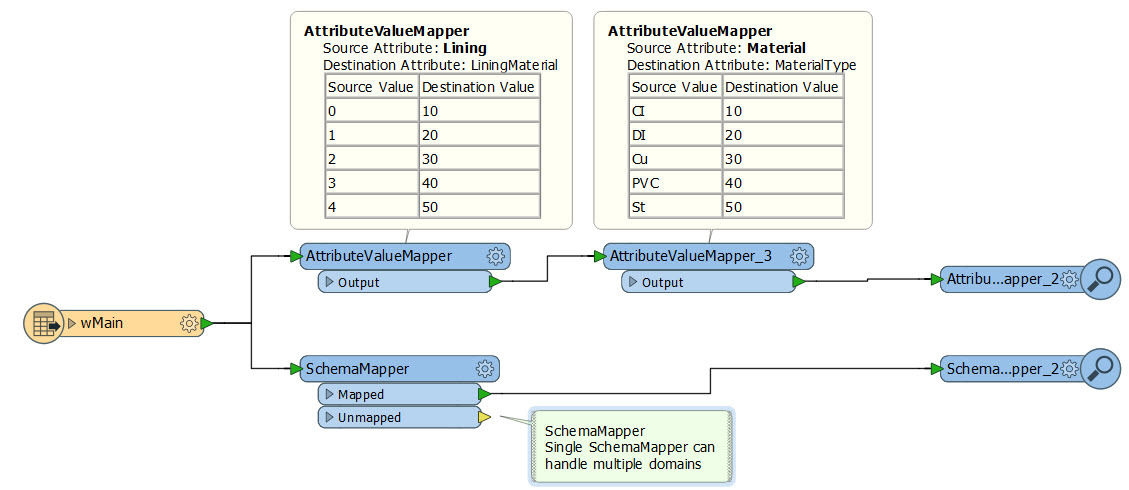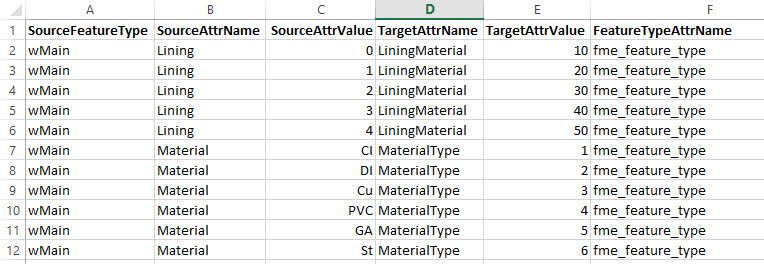Hello, I try to read my existing data model into a new empty data model with domains set up already when I built the new data model. After setting up the transformers at the FME workbench, the data got pushed over just fine from FME Inspector. When I open up ArcCatalog to check the data, the fields which have domains set up are all empty. I would assume it is because of the domains so it will not allow any other value to be in the dataset. In order to resolve this issue, do I need to manually clean up my existing data (lots of data!!) on ArcMap, in other words, to fix my existing values to match the new domain code for the new model? Or should I try something else?
Writing Existing Data into a new data model with new domains
Best answer by markatsafe
You can do the domain mapping in your FME workbench. You need to build a domain lookup table that maps the old (source) domain values to the new (target) domain values. You can use the AttributeValueMapper to build the domain lookup in the workspace - this article has an example in step 3. Or you can use the SchemaMapper .
Using the AttributeValueMapper is more straightforward. However, you'll need an AttributeValueMapper for each domain you need to map. The SchemaMapper is a little more work to configure, but then the look up tables are in a spreadsheet so they are much easier to configure and maintain in the long run, and one SchemaMapper will map several domains.
The attached workspace has an example of AttributeValueMapper and SchemaMapper: domainmappingexample2018.fmwt

The spreadsheet used by the SchemaMapper:

Reply
Enter your E-mail address. We'll send you an e-mail with instructions to reset your password.










